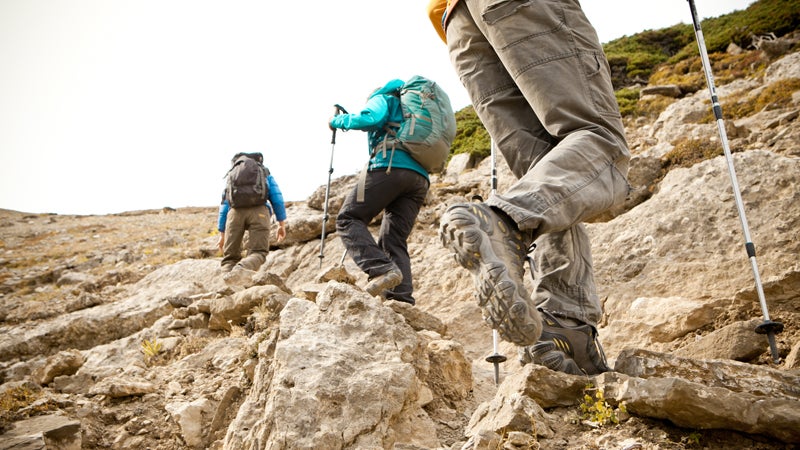First, you should start by thinking about this question in a different way. It’s not about breaking in the boot to fit your foot, but breaking in your foot to fit the boot.
If that sounds painful and a bit mystical, don’t worry. There are some easy steps you can follow to keep your feet happy and blister-free. To get to the soul of the matter, I called Josh Fairchilds, the cofounder of boot manufacturer Oboz. The company builds some of the burliest leather boots on the market, including my personal go-to kicks for long backpacking trips—.����
“Before anybody really gets outside in a pair of boots, they should treat the leather on the upper of the boot,” Fairchilds says. This will prolong the life of the boot, plus make the leather softer and thus more comfortable. Fairchilds recommends a that will also waterproof your boots.
You need to make sure the boots fit properly, and that means investing in high-quality socks and insoles. Good insoles will stabilize your foot inside the boot and minimize friction, explains Fairchilds. A high-quality sock will help make the boot fit well and will mitigate blisters, thanks to its wicking abilities.
Once you’ve dialed in the fit, Fairchilds suggests that you wear your boots around the house to get an idea of potential hot spots. “Then just start off on light hikes—an hour, a half-hour. After half a dozen short hikes like that, you can upgrade to a two- or three-hour hike,” Fairchilds says. “By that point, the boots should be ready for a backpacking trip.”
If you have specific issues, such as pain in your Achilles tendon, Fairchilds suggests a visit to your local backpacking store. High-end retailers with good boot fitters can typically fix problems like rough seams that would be difficult for you to soften up on your own. �� ��
Ultimately, though, the question boils down to one of anatomy. As Fairchild says, “There’s breaking in the boot, and then there’s breaking in your foot to conform to the boot.”
Part of breaking in a boot means softening the leather and getting the shoe to flex the way your foot flexes, says Paul Langer, president of the American Academy of Podiatric Sports Medicine and a practitioner in Minneapolis. But footwear also affects us in terms of movement patterns, muscle activation, and joint loading. �� ��
The bottom line? If you keep having issues with a particular boot, Langer suggests some customization. “Probably 25 to 40 percent of people need a little bit of customization for their footwear,” Langer says. “Instead of chasing your tail to find the perfect boot, perhaps you should think of the perfect boot as something that’s not mass-produced, something that’s good off the shelf and is then modified later on.”
Customizing a boot could mean anything from buying new insoles, adding a pad, stretching the shoe, or adjusting the heel to relieve pressure. The price of that type of work varies, but remember: customization is likely less expensive (and painful) than buying a series of shoes that don’t work for you.
��
��
��


